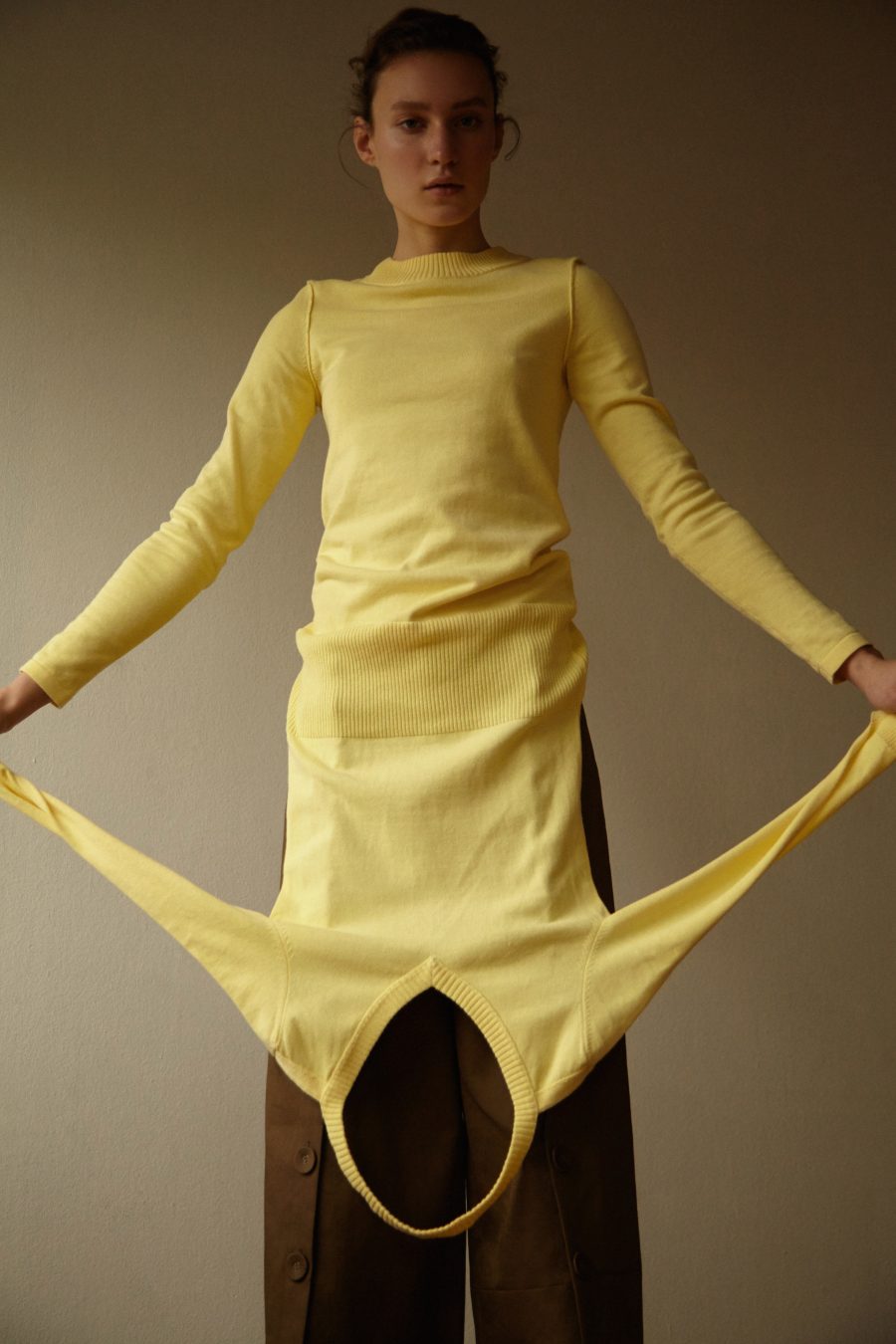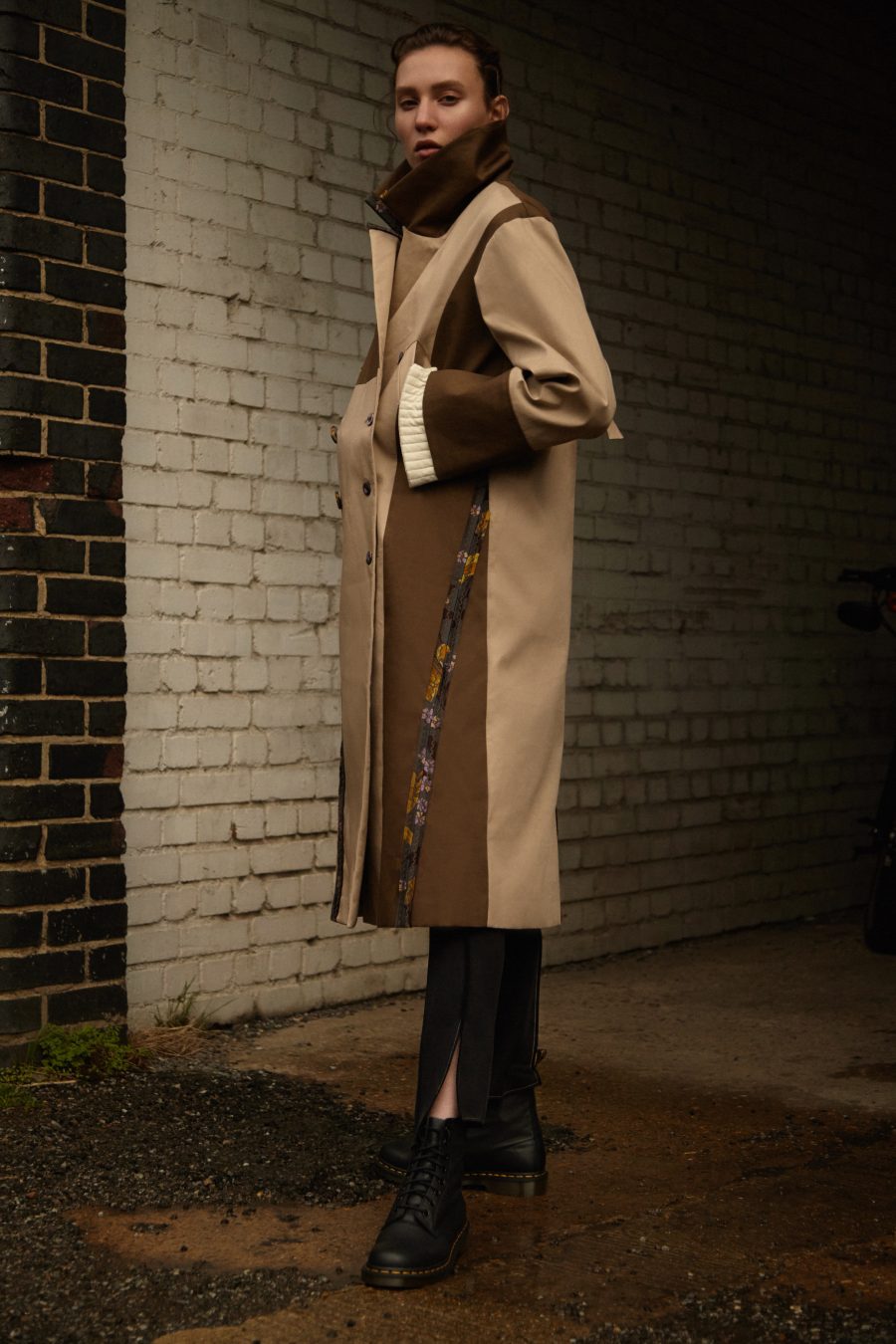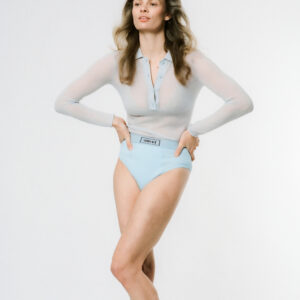PINGHE / women creating clothes for women
Feature 18.04.17
Photography Ana Larruy Styling Danielle Westwood Words Lena Dystant
London-based designer Ping He came to fashion via art and design, a passion fuelled at an early age by her mother, passing on skills from ink drawing to pattern-making. Ping’s formal art education mirrored this fusion of the creative and the functional, her final collection an experiment in shadow and light as applied to clothing. Following time spent at Alexander McQueen and Aftershock, Ping launched her eponymous label in 2013, “fundamentally about women creating clothes for women.” We sat down with the designer to discuss getting started and her plans to introduce style into gaming.

Tell us a little bit about your relationship with fashion growing up
My interest in fashion really began with fine art, something I was introduced to by my mother at an early age. She had always sketched and she taught me how to draw when I was really young. I remember her sketching on newspaper to create a pattern which she’d then cut and sew together, in fact she made all my clothes when I was little; she’s also an incredible self-taught knitter. I first learnt Chinese ink painting and then ink print, I was totally in love with it all and mum was always very cool and encouraging.
A lot of my friends were also involved in fine art. Typical students, we’d paint at night and sleep during the day. We were really into punk, grunge, anything alternative and we used to travel around China to go to gigs or galleries. I was really lucky growing up around that world and with such great friends. Even today, all of us are still doing something related to art, which is very unusual.

Tell us how you got started in the industry?
Well my first practical experience was as a window designer at a luxury bridal boutique just before I went to college. I went on to study at Suzhou University, one of the leading art and design universities in China. My BA graduate collection was a new design form that combined shadow with human body shapes. I was very much influenced by shadow and experimented with using light to cast shadows on my designs whilst I was wearing them. I’d then recreate these shapes on the inner and outer construction. It was an amazing means of self-reevaluation; I still use this method to discover and create. This was really where my journey to become a fashion designer began.
I later came to the UK to do my MA in Fashion and Textile Design and during the summer months of 2004 I interned at Alexander McQueen, working on fabric development. I then spent five years working for Aftershock, a luxury brand, designing evening and special occasion dresses. That period really helped me understand the market and business side of fashion, it was great preparation for launching my own brand. In 2013, I set up my own label PINGHE and two years later I founded pH15, my second line focusing on the modern dress.

How would you describe PINGHE?
The PINGHE signature style derives from my love of architecture and I use a combination of structured silhouettes and bold detail as the basis of the label’s aesthetic. I’ve always been interested in contradictory concepts, the idea of beautiful ugliness, right with wrong. I always try to discover both sides of one subject and so the PINGHE collections use soft and strong alongside elegant and powerful elements.

Do you design for yourself or do you have a customer in mind?
At the beginning, PINGHE was born from wanting something for myself and my mates to wear, clothing that was both comfortable and stylish at the same time. The idea of the PINGHE woman then became someone who is quietly confident, sophisticated and successful, both in life and her career. She has a strength, an acceptance of who she is and the self-assurance to walk her own path without the need to broadcast to the world.

Is there a particular ethos or philosophy behind your clothes?
PINGHE the brand is still built on those principles that it began with – comfort and confidence are at the heart of everything we do but it is fundamentally about women creating clothes for women. We have a different approach to male designers. A woman designs for herself and all the like-minded women around her. A male designer creates for a very targeted, specific woman.
Who or what influences your work?
My inspiration always comes from art, photography, film as well as music. I still love alternative culture. Right now, I’m super into the film 20th Century Women by Mike Mills. It’s a superb example of self-expression.

What’s the end goal for PINGHE?
The fashion industry is an evolution, it’s constantly changing and growing. My hope for PINGHE is that we continue to grow with this movement.
What are your plans for the future?
From my perspective, the industry is pretty good for me at the moment. In terms of creativity though, I would love to be able to work on something that combines fashion with computer games – I think it’s an area with so much potential. Computer games are so real now. Those characters need a very strong identity to express their emotions and catch the attention of the player. I kind of believe in a matrix, so if one day we all live in a virtual world we are certainly going to need some strong looks! I would love to style and design for games, that would be a real treat.

What were the lessons you learnt at Alexander McQueen and Camilla Staerk?
At McQueen: be yourself and be confident with what you create. At Camilla Staerk: the right brain and left brain must both function together in order to grow a business
What advice would you offer to someone starting their own label?
Enjoying what you do is the key to running a business and it is important to learn how to control the fine line between creativity and business tasks. For me personally, any challenges I’ve faced have become an opportunity to improve myself. When I face difficulties, it makes me uncomfortable and moody, so that motivates me to quickly find a way to solve the problem and when I do, that feels great.

All clothes by PINGHE AW17


